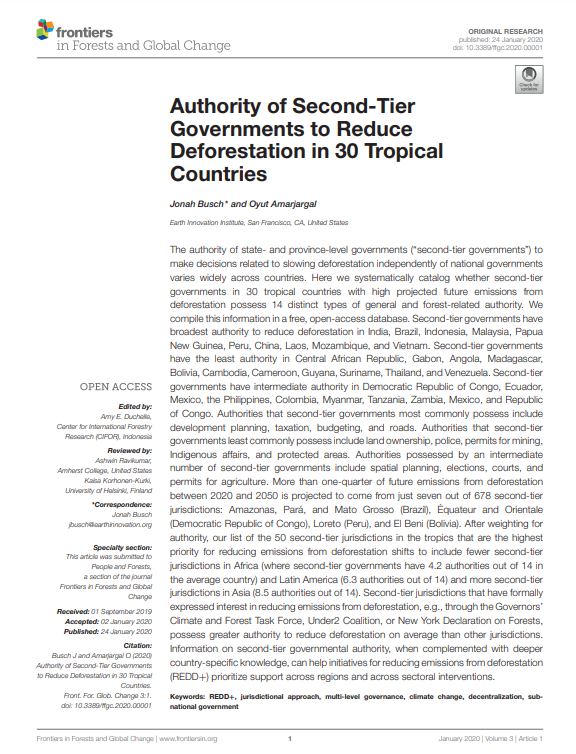Authority of Second-Tier Governments to Reduce Deforestation in 30 Tropical Countries
The authority of state- and province-level governments (“second-tier governments”) to make decisions related to slowing deforestation independently of national governments varies widely across countries. Here we systematically catalog whether second-tier governments in 30 tropical countries with high projected future emissions from deforestation possess 14 distinct types of general and forest-related authority.
We compile this information in a free, open-access database. Second-tier governments have broadest authority to reduce deforestation in India, Brazil, Indonesia, Malaysia, Papua New Guinea, Peru, China, Laos, Mozambique, and Vietnam. Second-tier governments have the least authority in Central African Republic, Gabon, Angola, Madagascar, Bolivia, Cambodia, Cameroon, Guyana, Suriname, Thailand, and Venezuela. Second-tier governments have intermediate authority in Democratic Republic of Congo, Ecuador, Mexico, the Philippines, Colombia, Myanmar, Tanzania, Zambia, and Republic of Congo. Authorities that second-tier governments most commonly possess include development planning, taxation, budgeting, and roads.
Authorities that second-tier governments least commonly possess include land ownership, police, permits for mining, Indigenous affairs, and protected areas. Authorities possessed by an intermediate number of second-tier governments include spatial planning, elections, courts, and permits for agriculture. More than one-quarter of future emissions from deforestation between 2020 and 2050 is projected to come from just seven out of 678 second-tier jurisdictions: Amazonas, Pará, and Mato Grosso (Brazil), Équateur and Orientale (Democratic Republic of Congo), Loreto (Peru), and El Beni (Bolivia).
